What if I told you that the silky, cloud-like frosting you’ve admired on professional cakes isn’t as intimidating as it seems? Swiss Meringue Buttercream is the secret weapon of pastry chefs everywhere, transforming ordinary desserts into showstoppers with its luxurious texture and subtle sweetness. Unlike traditional American buttercream that can be cloyingly sweet and grainy, this Swiss meringue buttercream delivers a velvety-smooth finish that melts on your tongue. The magic happens when you heat egg whites and sugar to dissolve every granule, then whip them into glossy peaks before incorporating butter for that signature silky consistency. While the process requires attention and patience, mastering this technique will elevate your cake decorating game forever. Whether you’re frosting a birthday cake, filling macarons, or piping elegant rosettes on cupcakes, this foolproof recipe will guide you through every step to achieve bakery-quality results at home.
Ingredients
| Ingredient | Amount |
|---|---|
| Large egg whites (approximately 180g) | 6 |
| Granulated sugar | 2 cups (400g) |
| Unsalted butter, softened but still cool, cut into tablespoon-sized pieces | 1 and 1/2 cups (340g) |
| Pure vanilla extract | 2 teaspoons |
| Salt | 1/8 teaspoon |
Timing
- Prep Time: 10 minutes
- Cook Time: 25-35 minutes
- Total Time: 35-45 minutes (comparable to making a batch of homemade cookies, but with professional-level results)
The actual hands-on time is minimal, though you’ll need to dedicate about 15 minutes to whipping the meringue. On humid days, this can extend to 18 minutes, so plan accordingly.
Step-by-Step Instructions
Step 1: Prepare Your Workspace and Separate the Eggs
Before you begin, ensure all your tools—mixing bowl, whisk, and spatula—are completely clean, dry, and grease-free. Even the tiniest bit of oil or grease will prevent the egg whites from whipping properly. Wipe everything down with lemon juice or white vinegar for extra insurance. Separate your eggs one at a time into a small bowl, then transfer each white to your heatproof mixing bowl. This careful approach means if a yolk breaks, you won’t contaminate your entire batch.
Tip: Cold eggs separate more easily, but room temperature whites whip better. Separate them cold, then let them come to room temperature for about 15 minutes.
Step 2: Create the Double Boiler and Heat the Mixture
Whisk the granulated sugar into the egg whites in your heatproof bowl. Place the bowl over a saucepan filled with two inches of gently simmering water over medium heat, making sure the bottom of the bowl doesn’t touch the water. Whisk constantly for about 4 minutes until the sugar completely dissolves and the mixture transforms from thick and tacky to thin and frothy with a white foam on top. Test readiness by rubbing a bit between your fingers—you shouldn’t feel any sugar granules. Alternatively, use an instant-read thermometer to confirm it reaches 160°F (71°C).
Tip: Constant whisking prevents the egg whites from scrambling. Keep that whisk moving in steady, circular motions throughout this step.
Step 3: Whip the Meringue to Stiff Peaks
Without cooling the mixture, immediately transfer it to the bowl of your stand mixer fitted with the whisk attachment. Beat on medium-high speed for 10-15 minutes until stiff, glossy peaks form and the meringue bowl feels cool to the touch. The mixture will gradually thicken and transform from a liquid to a marshmallow-like consistency. On humid days, this process can take up to 18 minutes. If it’s taking forever, place the uncovered bowl in the refrigerator for 10 minutes, then resume beating.
Tip: Your arm will tire quickly with a hand mixer, so a stand mixer is highly recommended for this step. Use the time to prep your butter and workspace.
Step 4: Cool the Meringue Completely
Before adding butter, ensure both the bowl and meringue have cooled to room temperature (around 70°F or 21°C). Touch the outside of the bowl and dip your finger into the meringue to check. A warm meringue will melt the butter, resulting in a soupy mess. If needed, place the bowl in the refrigerator to speed up cooling, but check frequently to avoid over-chilling.
Tip: This cooling step is crucial for success. Rushing it is one of the most common reasons Swiss meringue buttercream fails.
Step 5: Incorporate the Butter
Switch to the paddle attachment on your stand mixer. With the mixer running on medium-high speed, add the softened butter one tablespoon at a time, waiting for each piece to fully incorporate before adding the next. This gradual process ensures smooth emulsification. After all the butter is added, the mixture may look curdled or separated—don’t panic, this is normal. Reduce speed to medium and beat in the vanilla extract and salt for about 30 seconds.
Tip: Your butter should be cool but pliable—about 65°F. Too cold and it won’t incorporate smoothly; too soft and it will make the buttercream soupy.
Step 6: Troubleshoot and Perfect the Texture
Your finished Swiss meringue buttercream should be thick, creamy, and silky smooth. If it looks curdled, separated, or too thick, place the bowl back over simmering water (without stirring) for 1-2 minutes until the edges become liquid while the center stays solid. Remove from heat, return to the mixer, and beat on low for 30 seconds, then increase to medium-high for 2 minutes until smooth. If it’s too thin and soupy, refrigerate the covered bowl for 20 minutes, then beat again on medium-high until thickened.
Tip: Don’t refrigerate for longer than 20 minutes or the butter will solidify too much. Work in 20-minute intervals if needed.
Nutritional Information
Per serving (based on 12 servings, approximately 2 tablespoons):
- Calories: 240 kcal
- Protein: 1 g
- Carbohydrates: 20 g
- Sugar: 20 g
- Fat: 18 g
- Saturated Fat: 11 g
- Cholesterol: 45 mg
- Sodium: 35 mg
- Vitamin A: 12% of daily value
Swiss meringue buttercream is an indulgent frosting meant for special occasions. While it’s higher in fat and sugar, it’s less sweet than American buttercream, allowing you to use less overall while achieving superior flavor and texture.
Healthier Alternatives
Reduce Sugar: Cut the granulated sugar to 1.5 cups (300g) for a less sweet version that still maintains proper meringue structure. Going below this amount may compromise stability.
Use European-Style Butter: European butter has higher fat content and richer flavor, allowing you to appreciate smaller portions while getting maximum taste satisfaction.
Add Natural Flavorings: Incorporate fruit purees, espresso powder, or cocoa powder to add flavor complexity without extra sugar. Just add these after the vanilla extract.
Light Buttercream Option: Mix equal parts Swiss meringue buttercream with stabilized whipped cream to create a lighter, mousse-like frosting with 40% fewer calories.
Egg White Alternative: While not traditional, you can experiment with aquafaba (chickpea liquid) for a vegan version, though the texture and stability will differ from the classic recipe.
Serving Suggestions
This luxurious Swiss meringue buttercream is incredibly versatile for decorating and filling cakes, cupcakes, macarons, and cookies. Use it to create smooth, professional-looking cake finishes that photograph beautifully. Pipe elegant rosettes on vanilla cupcakes for a classic presentation, or tint it with gel food coloring to create stunning ombre effects on layer cakes. The buttercream pipes beautifully and holds intricate details for up to several hours at room temperature.
For flavor variations, fold in melted and cooled chocolate for a decadent chocolate buttercream, or add lemon zest and juice for a bright citrus version perfect for spring celebrations. Swiss meringue buttercream pairs exceptionally well with fruit-filled cakes, chocolate ganache layers, and delicate sponge cakes. It’s ideal for weddings, birthdays, and special occasions when you want that professional bakery quality that makes guests ask for your secret.
Common Mistakes to Avoid
- Using greasy equipment: Even a trace of oil or grease prevents egg whites from whipping properly, resulting in flat meringue. Always wipe bowls and whisks with vinegar or lemon juice before starting.
- Adding butter to warm meringue: This is the number one cause of soupy buttercream. The meringue must cool to room temperature (around 70°F) before incorporating butter, or it will melt and refuse to emulsify.
- Rushing the whipping process: Underwhipped meringue won’t have the structure needed to support the butter. Beat the meringue for the full 10-15 minutes until it forms stiff, glossy peaks and feels cool to the touch.
- Using cold butter: Rock-hard butter won’t incorporate smoothly, creating lumps. Your butter should be softened but still cool—about 65°F—and pliable when pressed.
- Panicking when it looks curdled: Swiss meringue buttercream often looks broken or separated after adding all the butter. Keep beating for another 2-3 minutes and it will come together beautifully into a smooth, silky frosting.
Storing Tips
Store Swiss meringue buttercream in an airtight container at room temperature for up to 2 days, in the refrigerator for up to 1 week, or freeze for up to 3 months. When refrigerated, the buttercream will become firm and solid. Before using, let it come to room temperature for about 2 hours, then re-whip with a paddle attachment on medium speed for 2-3 minutes until smooth and fluffy again.
For frozen buttercream, thaw overnight in the refrigerator, then bring to room temperature and re-whip as described above. The texture will be just as perfect as freshly made.
Make-Ahead Tip: Prepare the buttercream up to a week in advance and refrigerate it. This actually makes decorating easier since you can plan ahead for special occasions without day-of stress. Just remember to re-whip before using.
Conclusion
Mastering Swiss Meringue Buttercream opens up a world of cake decorating possibilities with its silky texture, subtle sweetness, and professional finish. While the technique requires patience and attention to detail, the results are absolutely worth every minute of effort. This elegant frosting transforms ordinary cakes into bakery-worthy masterpieces that taste as incredible as they look. The smooth, velvety consistency pipes like a dream and creates those picture-perfect finishes you’ve always admired. Try this recipe and let us know in the comments how your Swiss meringue buttercream turned out! Share photos of your beautifully frosted creations and any flavor variations you loved. Don’t forget to rate this recipe and subscribe to our blog for more professional baking techniques and foolproof recipes delivered straight to your inbox.
FAQs
Q1. Why did my Swiss meringue buttercream turn out soupy?
This happens when the butter is added to meringue that’s still too warm, causing the butter to melt instead of emulsify. The fix is simple: place the entire bowl in the refrigerator for 20 minutes to cool and firm up the butter, then return it to the mixer and beat on medium-high speed until it thickens to the proper consistency. Always ensure your meringue is completely cool (around 70°F) before adding butter.
Q2. Can I make Swiss meringue buttercream ahead of time?
Absolutely. You can prepare it up to one week in advance and store it in an airtight container in the refrigerator, or freeze it for up to three months. When ready to use, bring it to room temperature (this takes about 2 hours), then re-whip it with the paddle attachment on medium speed for 2-3 minutes until smooth and fluffy. The texture will be just as perfect as freshly made.
Q3. What can I do if my buttercream looks curdled or separated?
Don’t worry—this is completely normal and easily fixable. Place your mixing bowl over a pot of simmering water for 1-2 minutes without stirring, allowing just the edges to become liquid. Remove from heat, return to the mixer, beat on low for 30 seconds, then increase to medium-high for about 2 minutes. This gentle warming helps the fats re-emulsify, transforming the curdled mixture into silky-smooth buttercream.
Q4. Can I flavor Swiss meringue buttercream?
Yes! Swiss meringue buttercream is incredibly versatile for flavoring. Add extracts (almond, peppermint, coconut) along with the vanilla. For chocolate buttercream, fold in 6-8 ounces of melted and cooled chocolate. For fruit flavors, add freeze-dried fruit powder or concentrated fruit puree, reducing liquid ingredients slightly to maintain consistency. Coffee lovers can mix in 2 tablespoons of espresso powder dissolved in a teaspoon of water.
Q5. How long can decorated cakes with Swiss meringue buttercream sit out?
Cakes frosted with Swiss meringue buttercream can sit at room temperature for up to 8 hours, making them perfect for parties and events. However, because it contains butter and eggs, it’s best to refrigerate the cake after that time. The buttercream will firm up in the fridge but returns to its silky texture once it comes back to room temperature in about 30-60 minutes before serving.
Print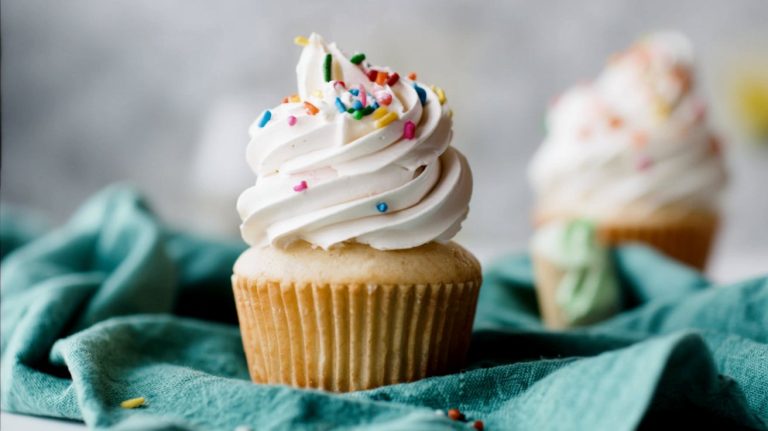
Perfect Swiss Meringue Buttercream Recipe Guide
Silky-smooth Swiss meringue buttercream that’s stable, pipeable, and not overly sweet. This step-by-step guide walks you through foolproof technique, precise temperatures, and texture fixes for professional bakery results at home.
- Total Time: 40 minutes
- Yield: 12 servings (about 2 tbsp each)
Ingredients
Swiss Meringue Buttercream
- 6 large egg whites (about 180 g)
- 2 cups granulated sugar
- 1 1/2 cups unsalted butter, softened but still cool, cut into tablespoon-sized pieces
- 2 tsp pure vanilla extract
- 1/8 tsp salt
Instructions
- Prepare your workspace & separate eggs: Ensure bowl, whisk, and tools are impeccably clean and grease-free (wipe with lemon juice or vinegar). Separate eggs one at a time; transfer whites to a heatproof bowl. Let whites stand 15 minutes to come to room temp. Tip: Cold eggs separate easier; room‑temp whites whip better.
- Make a double boiler & heat mixture: Whisk sugar into egg whites. Set bowl over a saucepan with ~2 inches of gently simmering water (bowl shouldn’t touch water). Whisk constantly ~4 minutes until sugar dissolves and mixture turns thin and frothy; or to 160°F (71°C). Tip: Rub between fingers—no sugar grains.
- Whip to stiff peaks: Transfer immediately to stand mixer with whisk. Beat on medium‑high 10–15 minutes (up to 18 minutes on humid days) until stiff, glossy peaks form and the bowl feels cool. Tip: If warming stalls, chill the uncovered bowl 10 minutes, then continue.
- Cool completely: Ensure meringue and bowl are at room temp (~70°F/21°C) before adding butter. If needed, refrigerate briefly, checking often to avoid over‑chilling.
- Add butter & flavor: Switch to paddle. With mixer running on medium‑high, add butter 1 Tbsp at a time until incorporated. It may look curdled—keep going. Mix in vanilla and salt; beat ~30 seconds until smooth and silky.
- Troubleshoot texture: If curdled/thick, warm the bowl over simmering water 1–2 minutes (edges just melting), then beat low 30 seconds, increase to medium‑high 2 minutes. If thin/soupy, refrigerate 20 minutes, then beat again until thick and satiny. Repeat in short intervals as needed.
Notes
Yields enough to generously frost 12 cupcakes or a 2‑layer 8‑inch cake. Store airtight: up to 2 days at cool room temp, 1 week refrigerated, or 2 months frozen. Bring to room temp and re‑whip before using. Avoid making on very hot, humid days if possible.
- Prep Time: 10 minutes
- Cook Time: 30 minutes
- Category: Frosting, Icing
- Cuisine: Swiss
Nutrition
- Calories: 240
- Sugar: 20
- Sodium: 35
- Fat: 18
- Saturated Fat: 11
- Carbohydrates: 20
- Protein: 1
- Cholesterol: 45


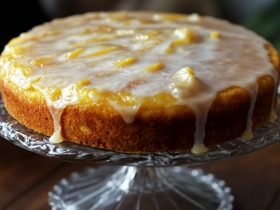
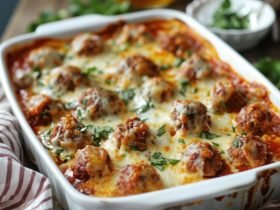

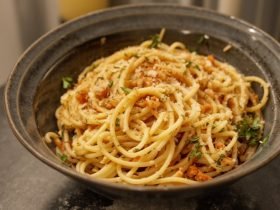
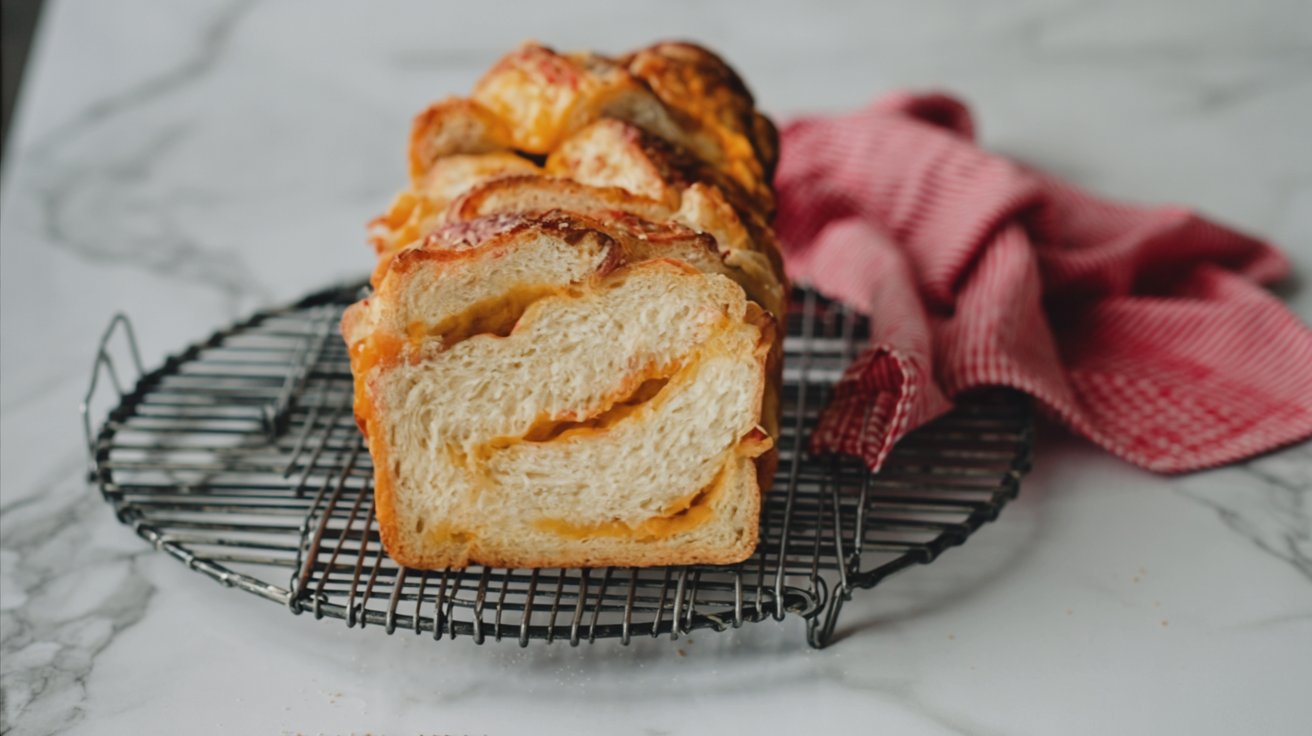
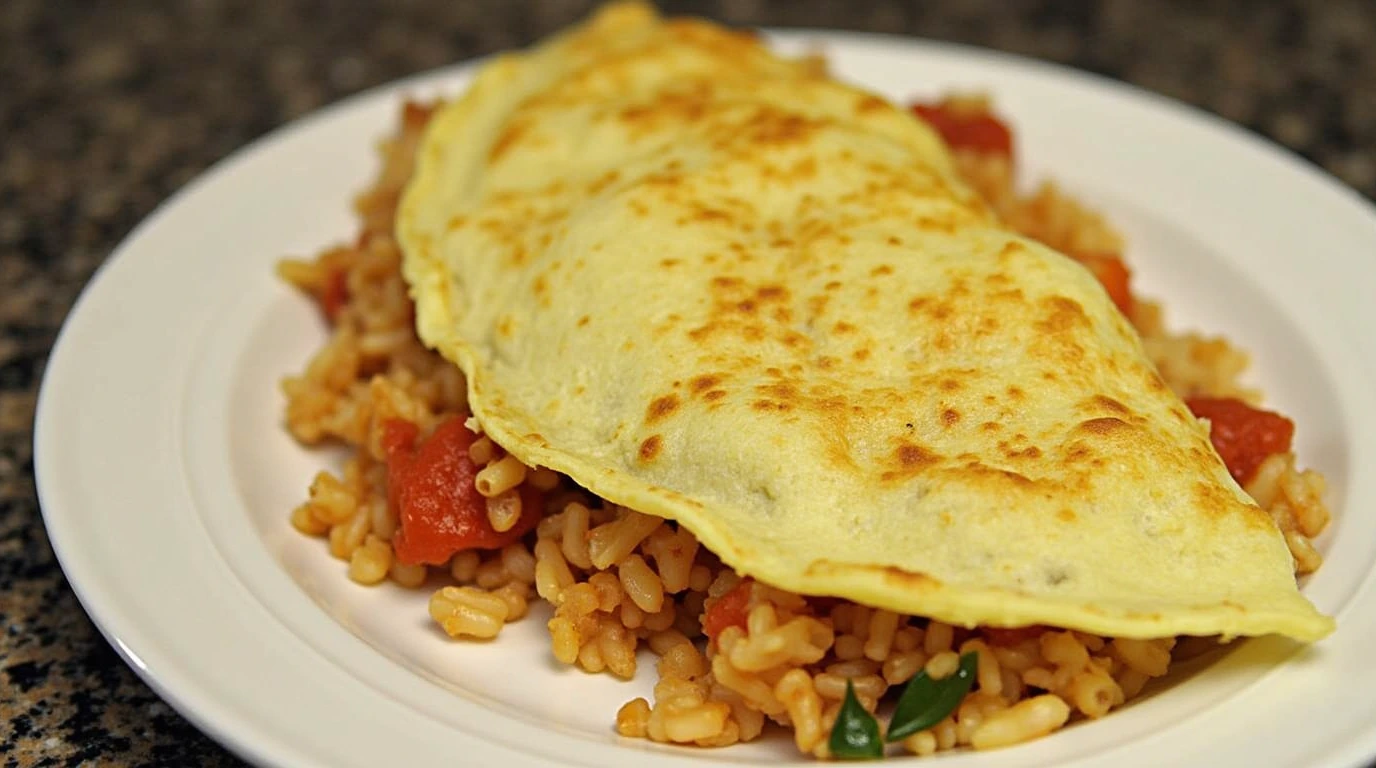
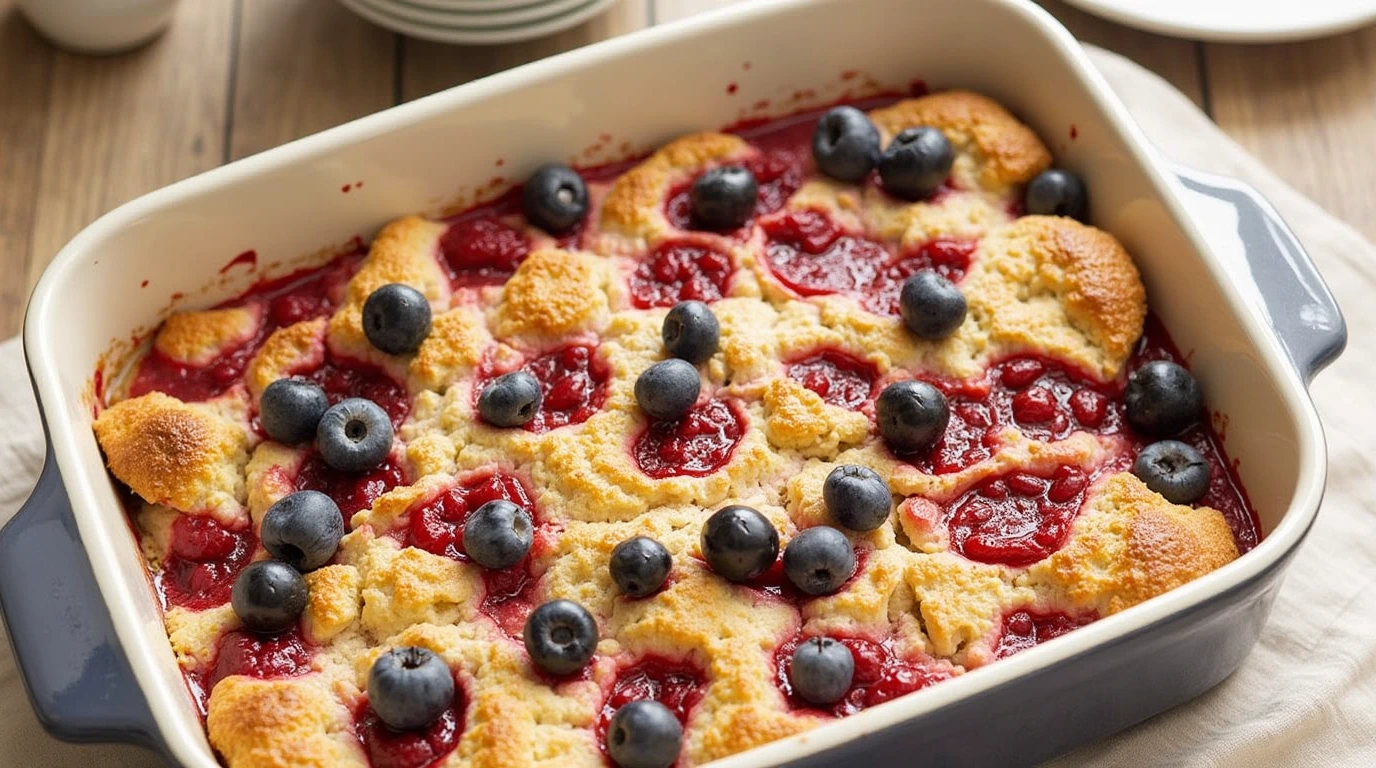
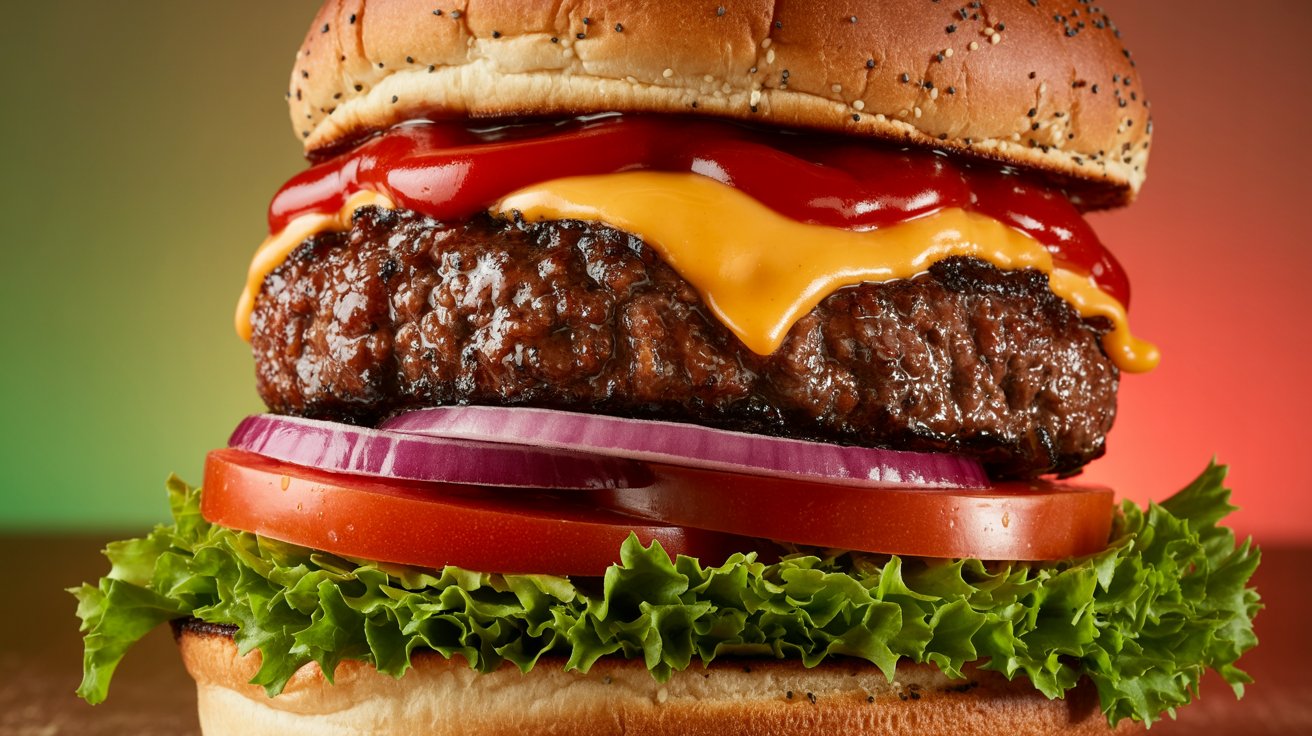
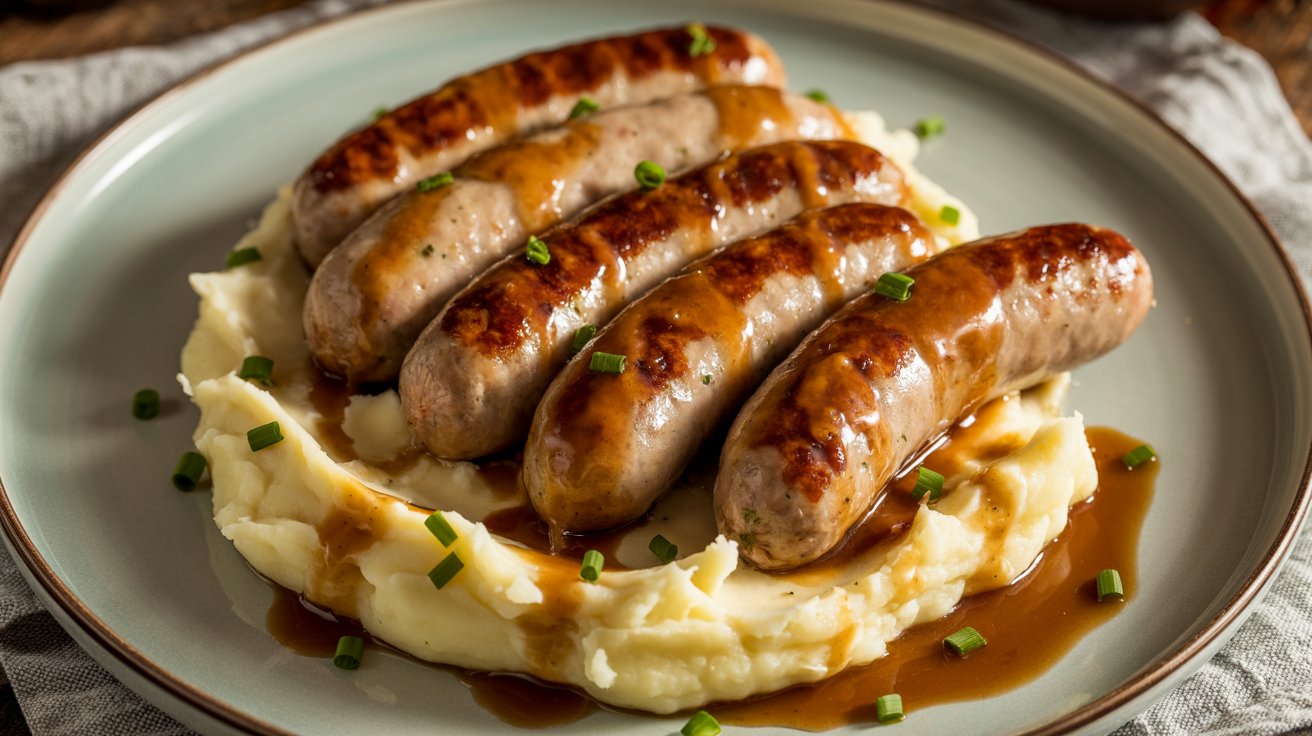
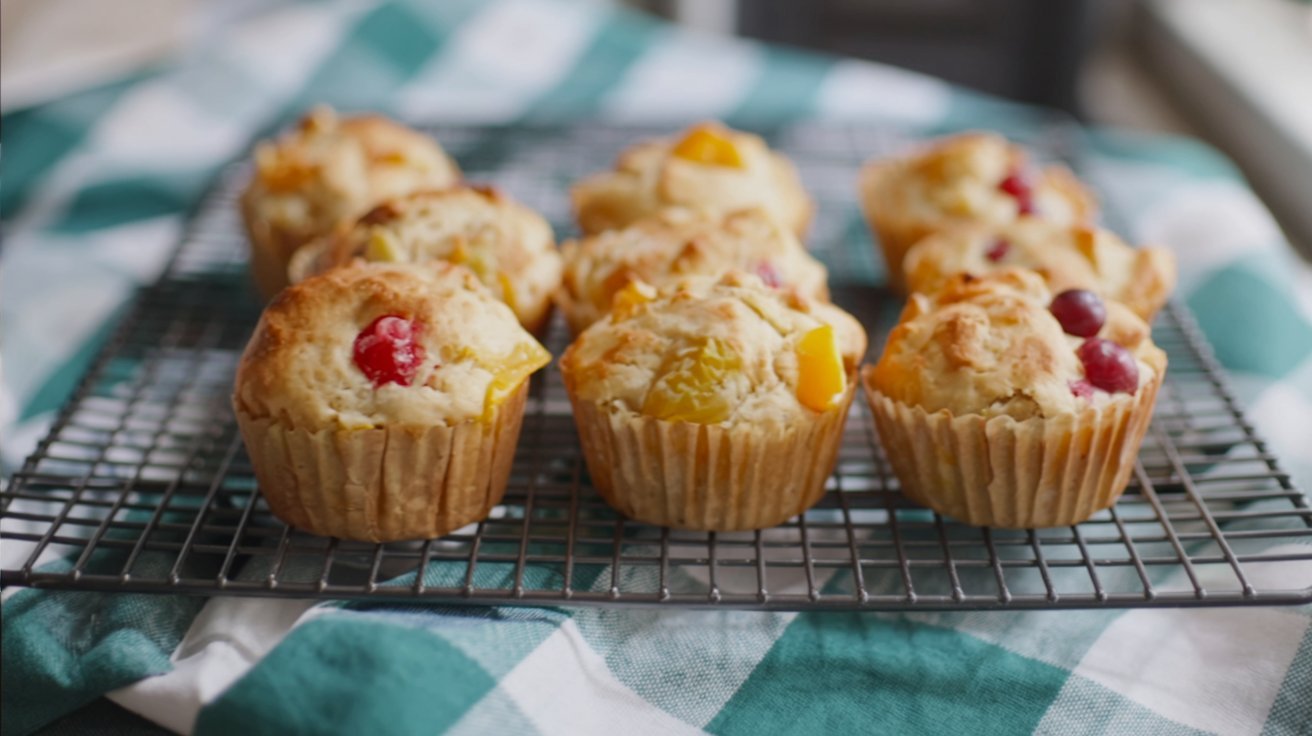

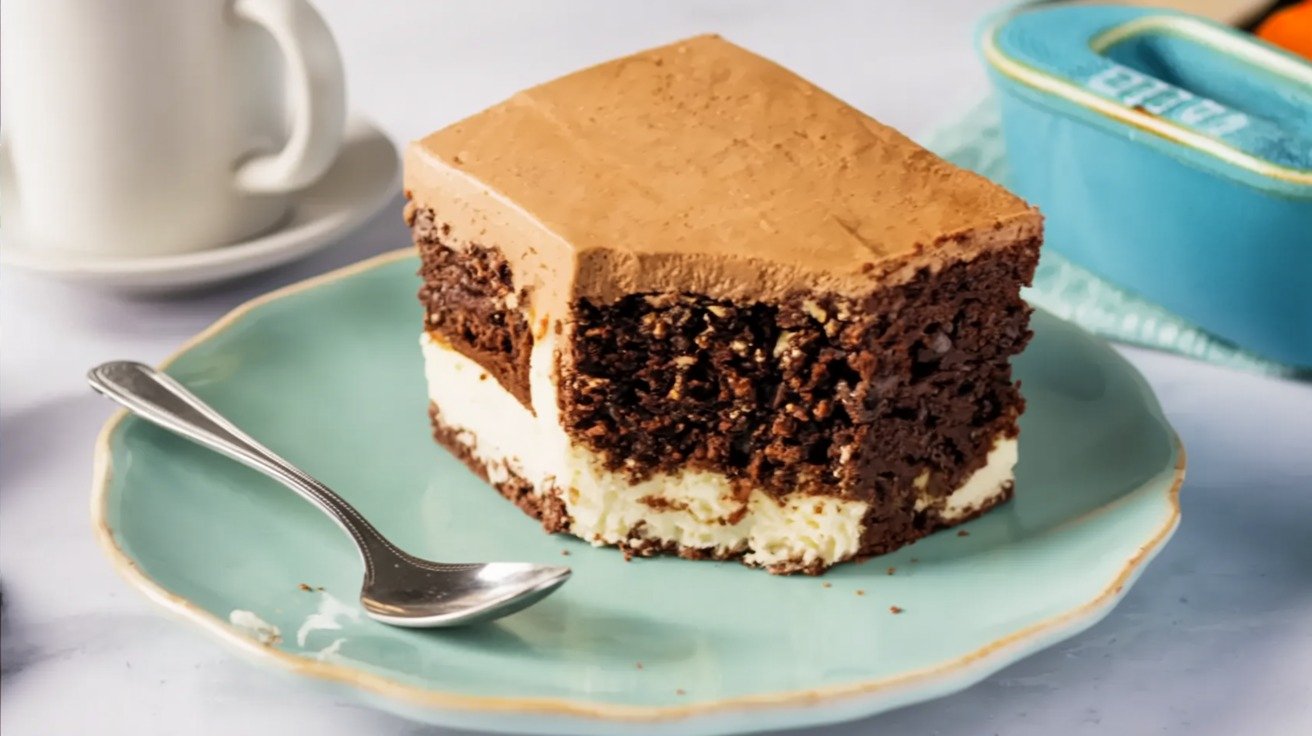
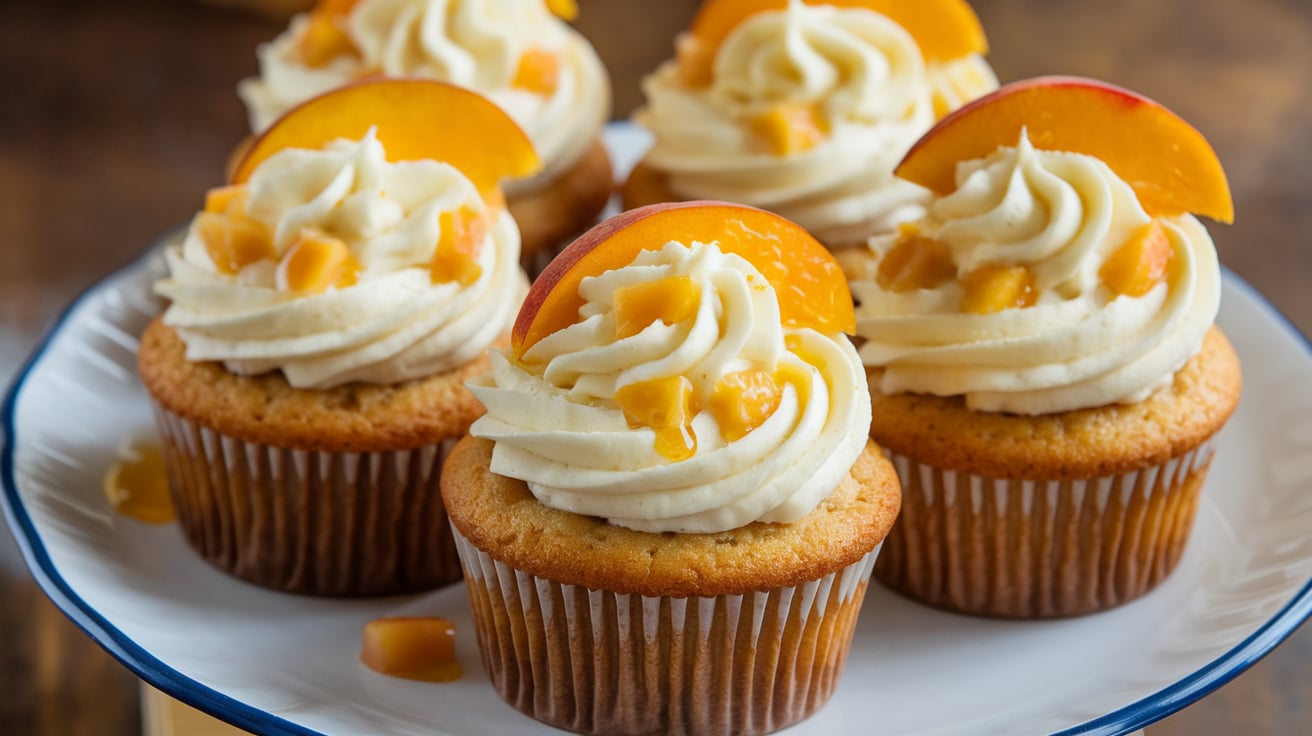
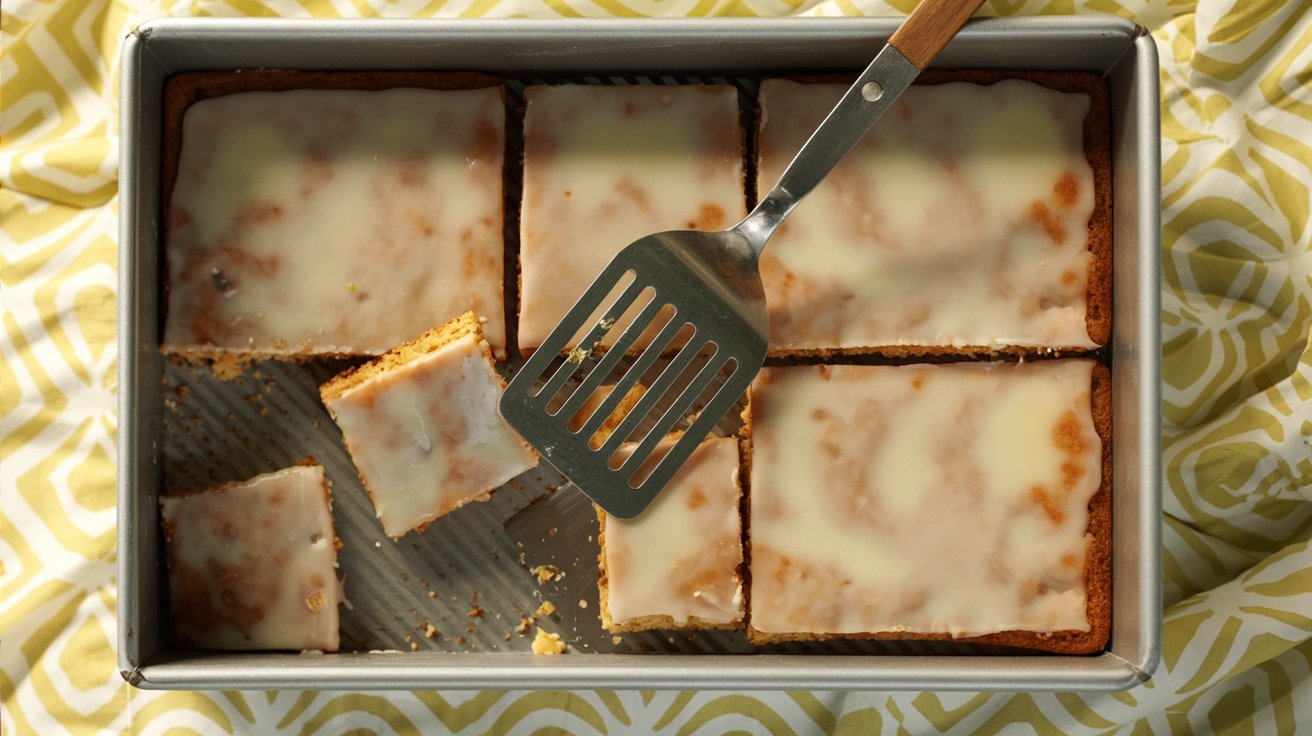
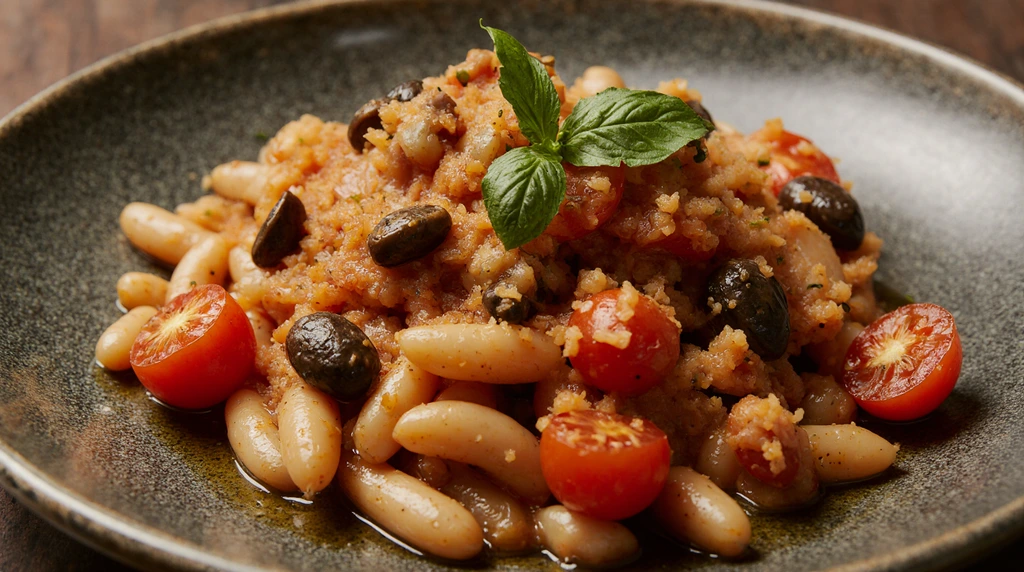
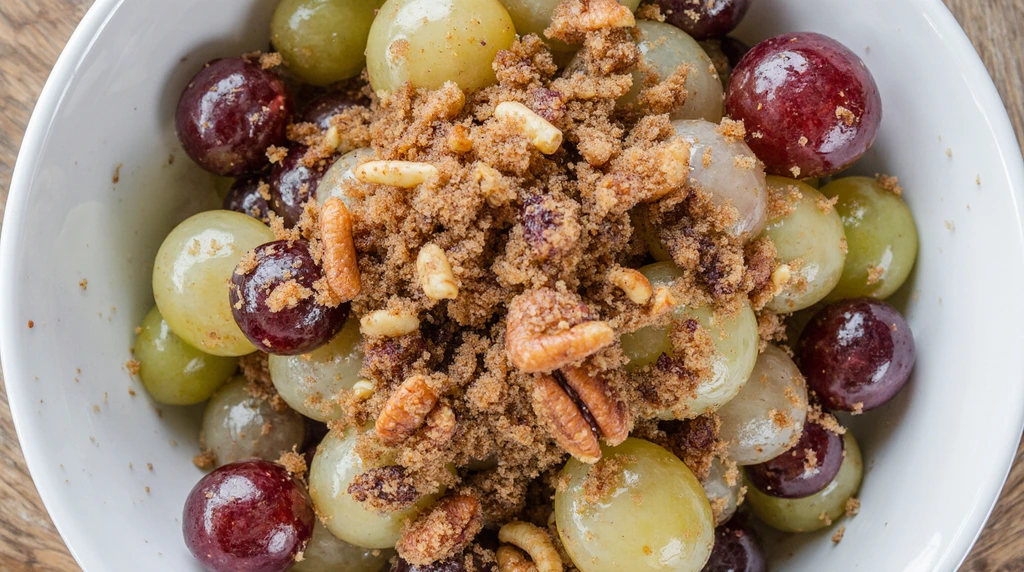
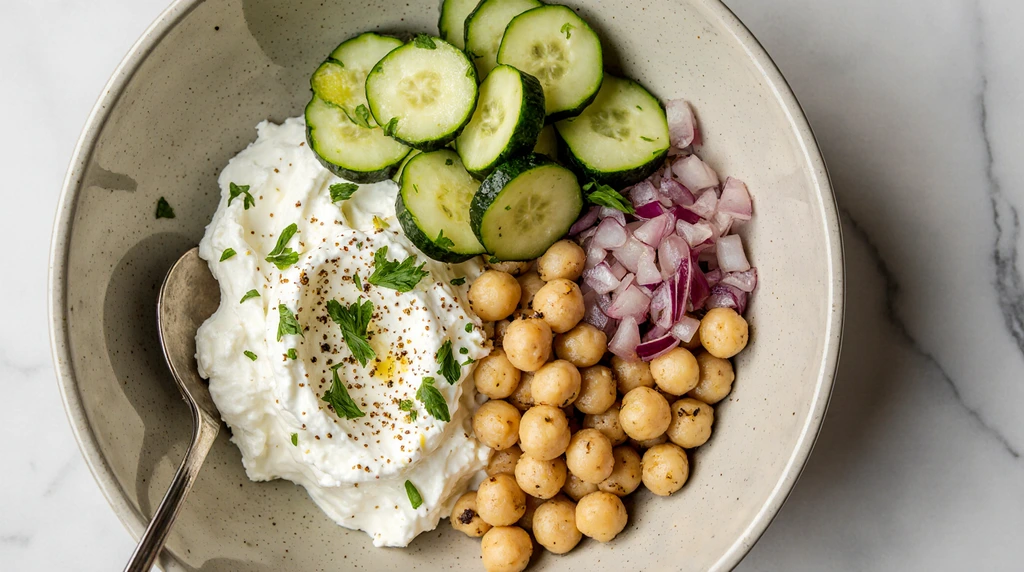
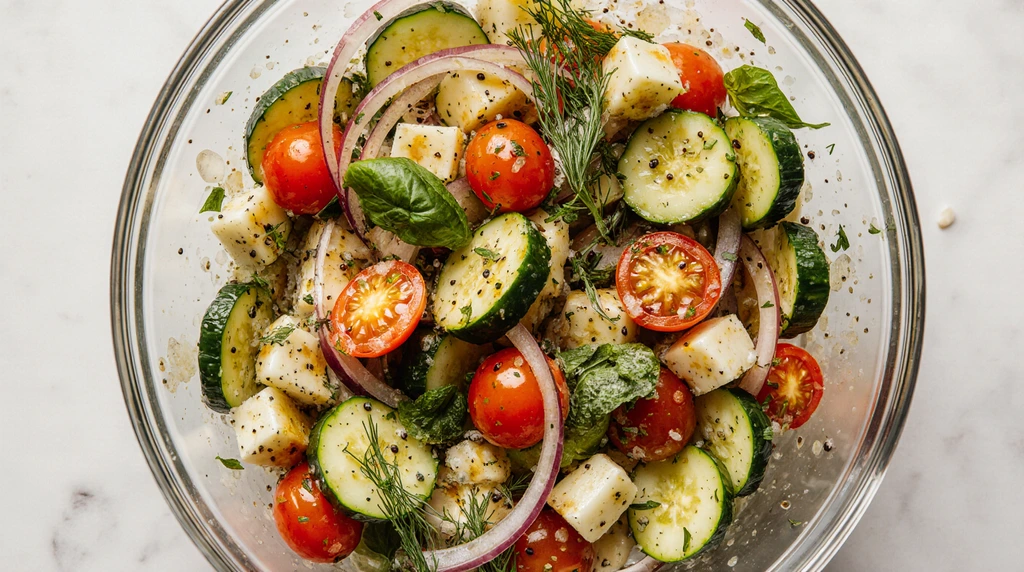
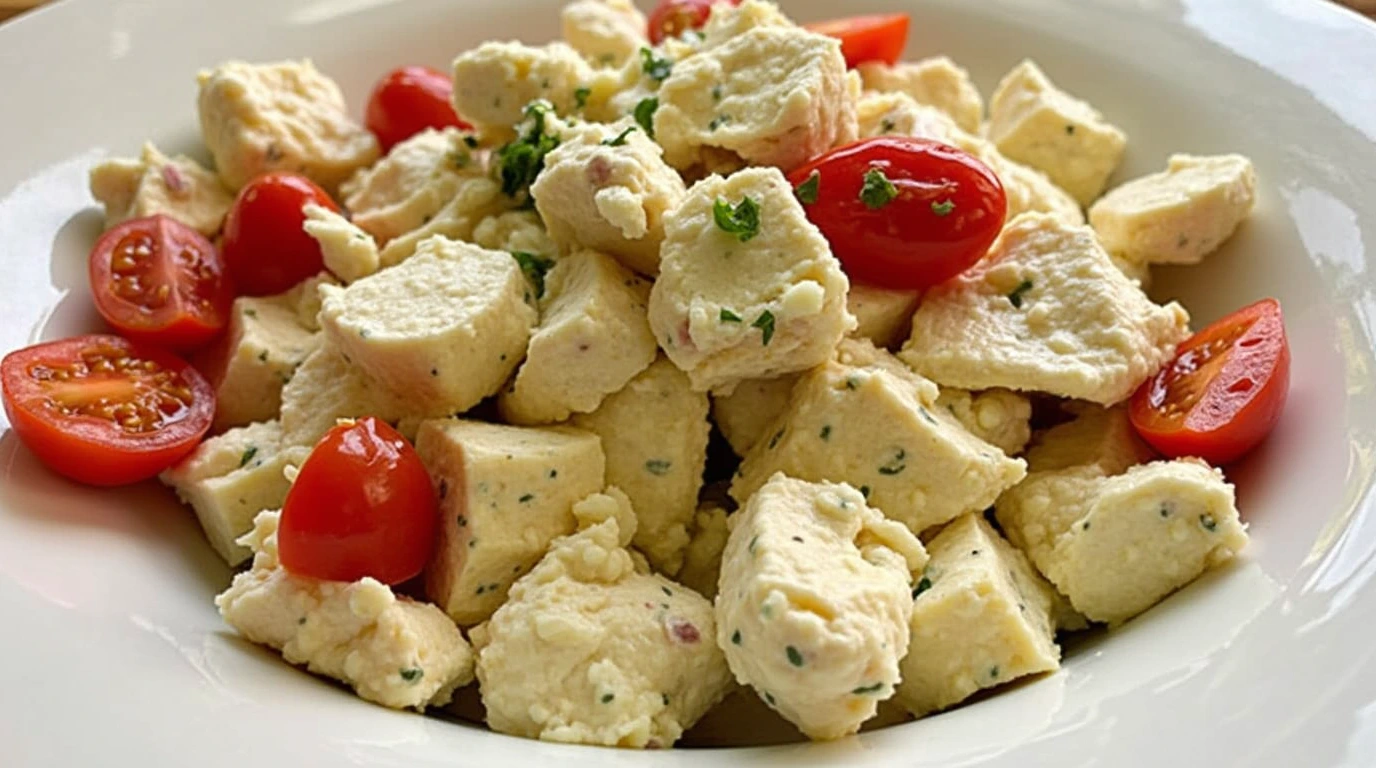

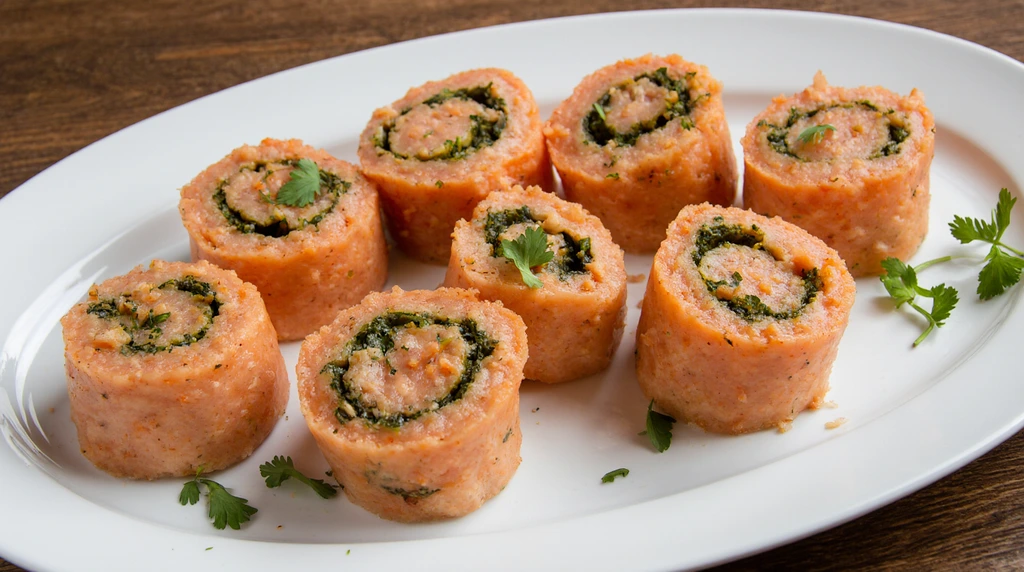
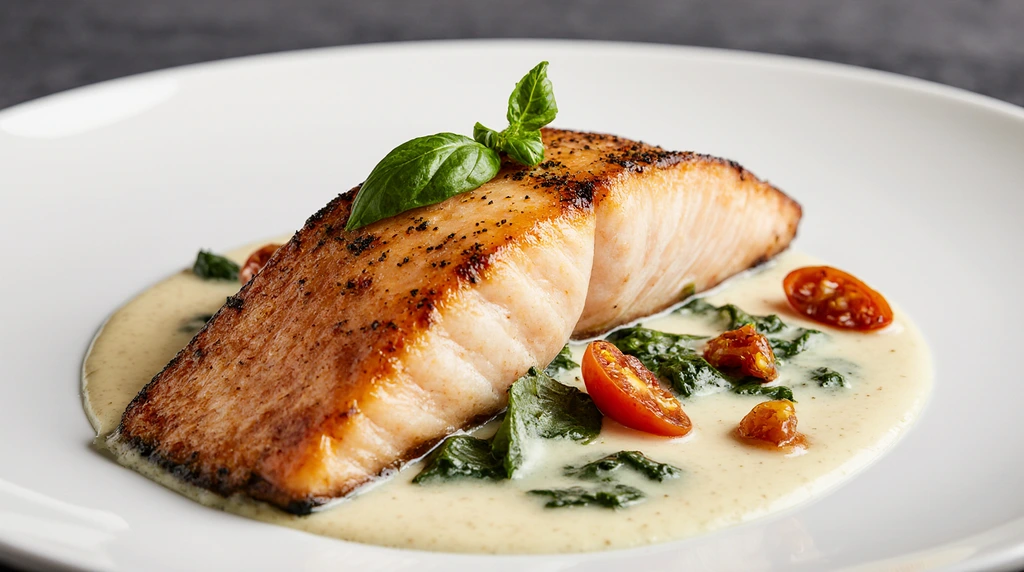
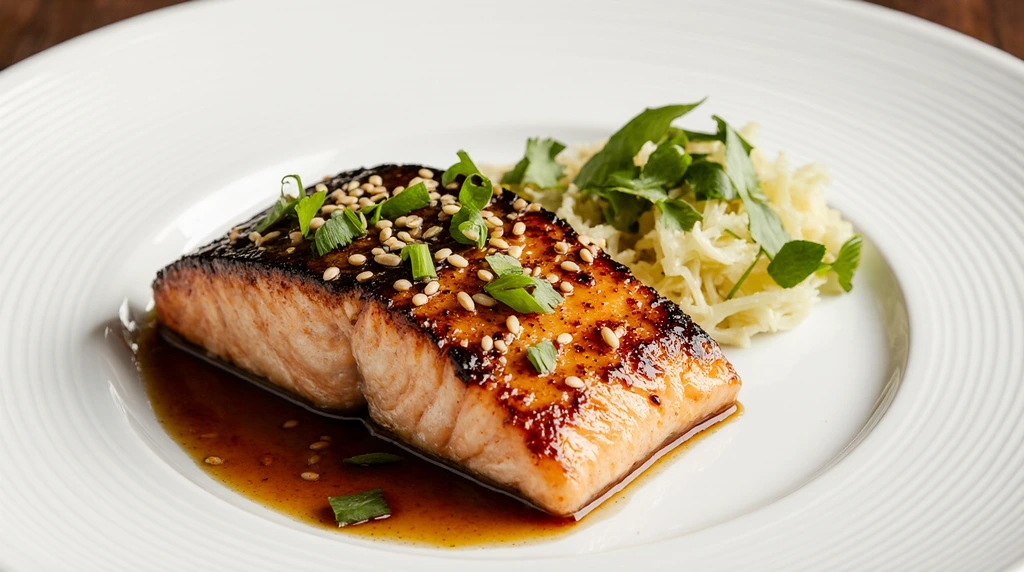
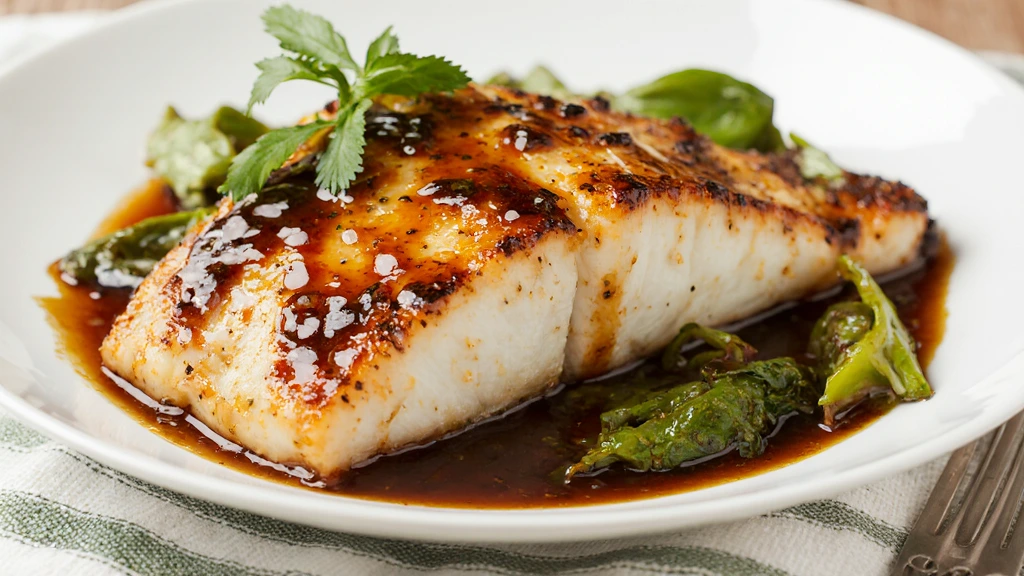
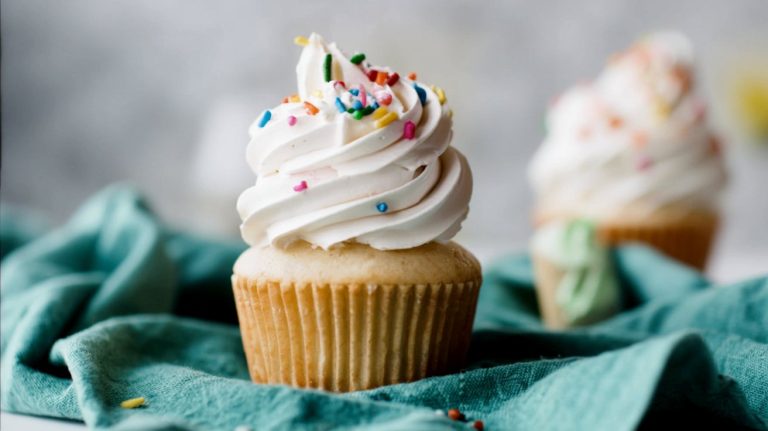

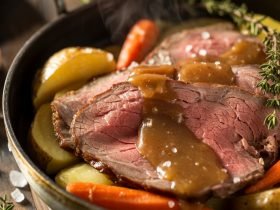
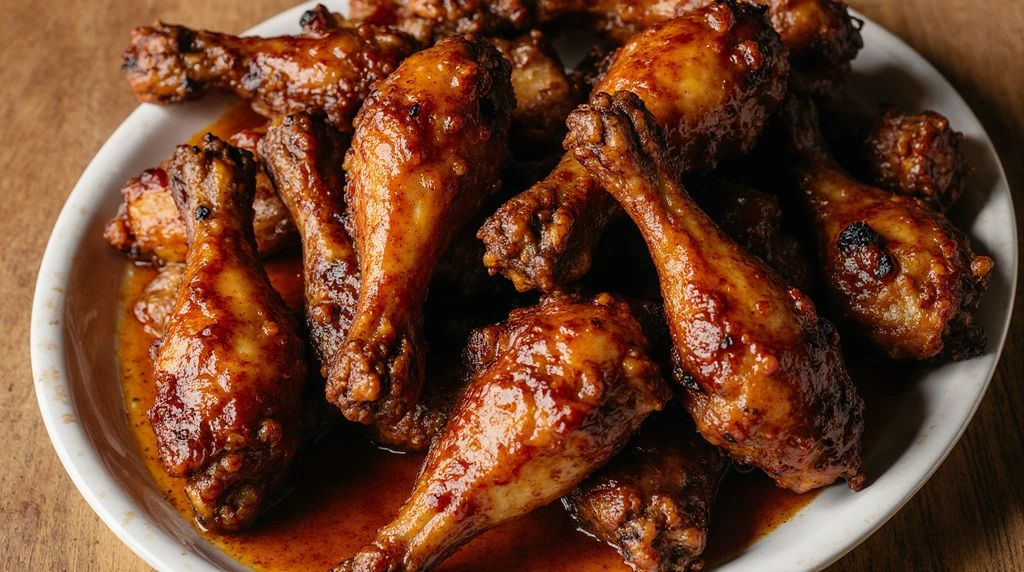
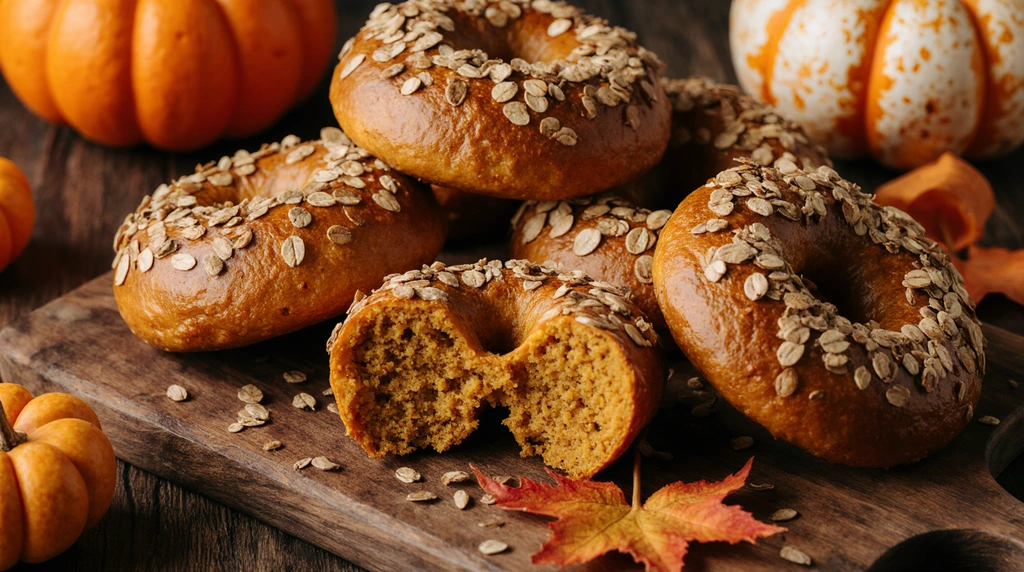
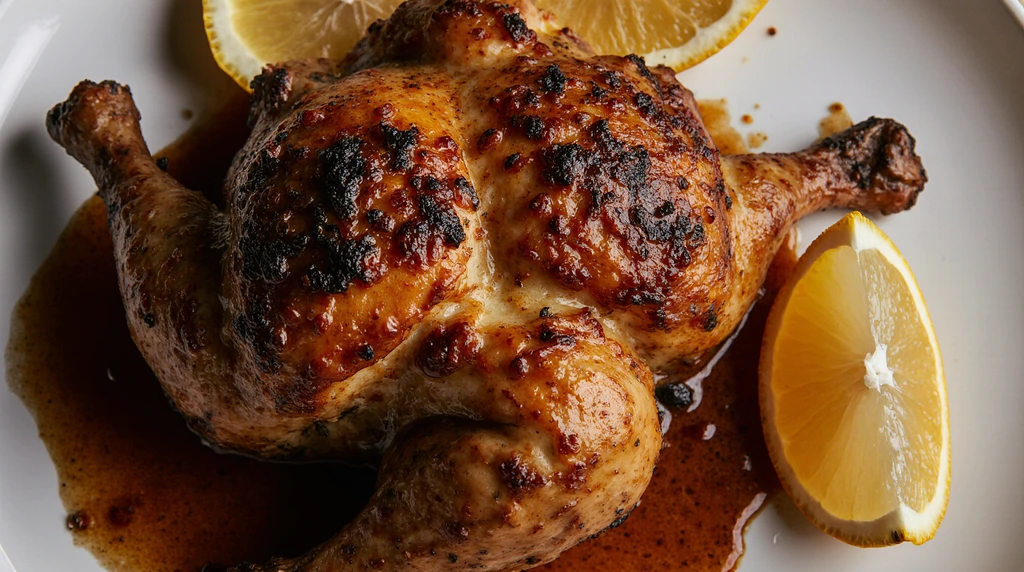
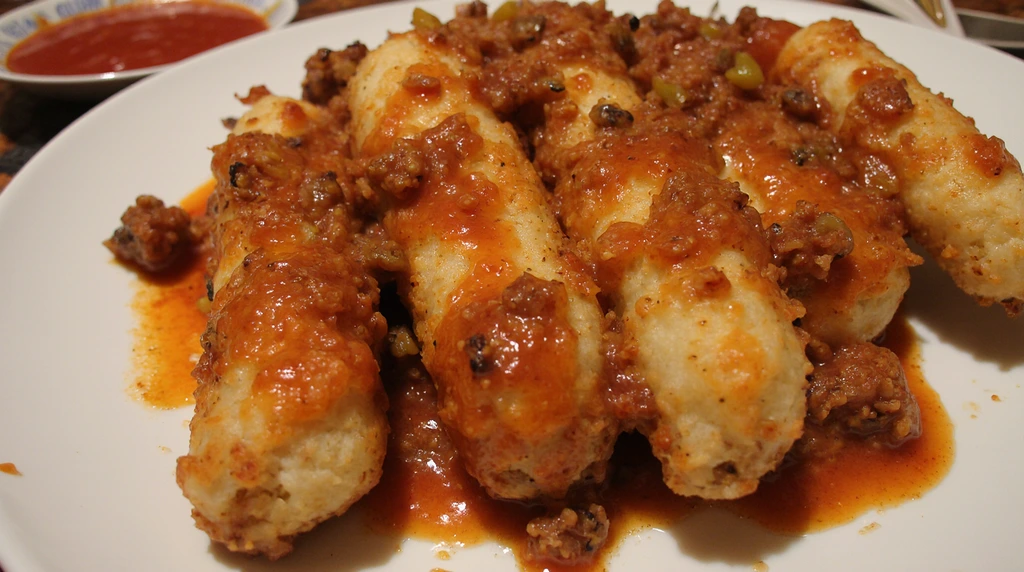
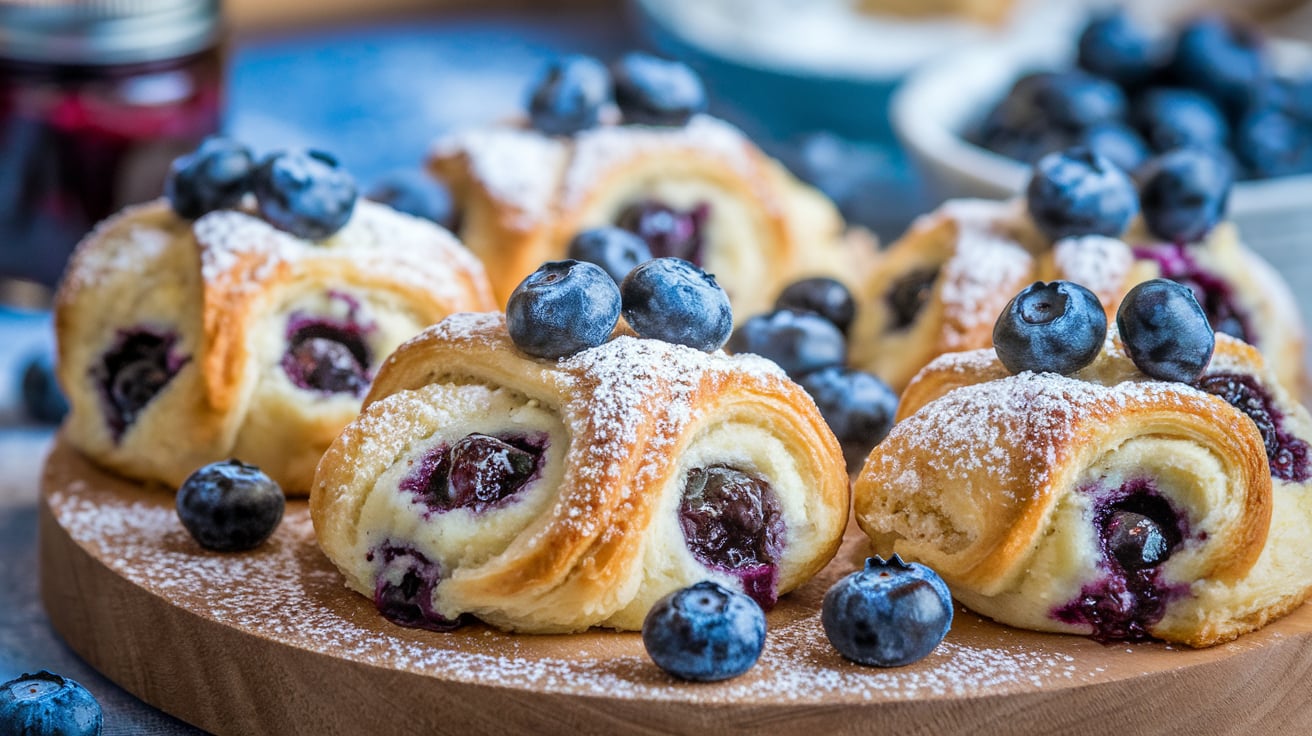
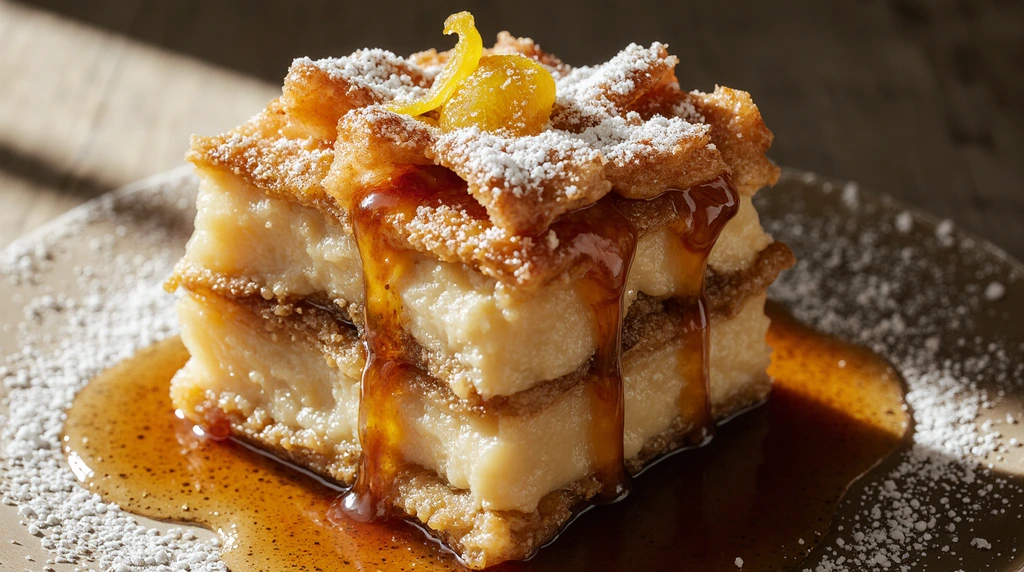
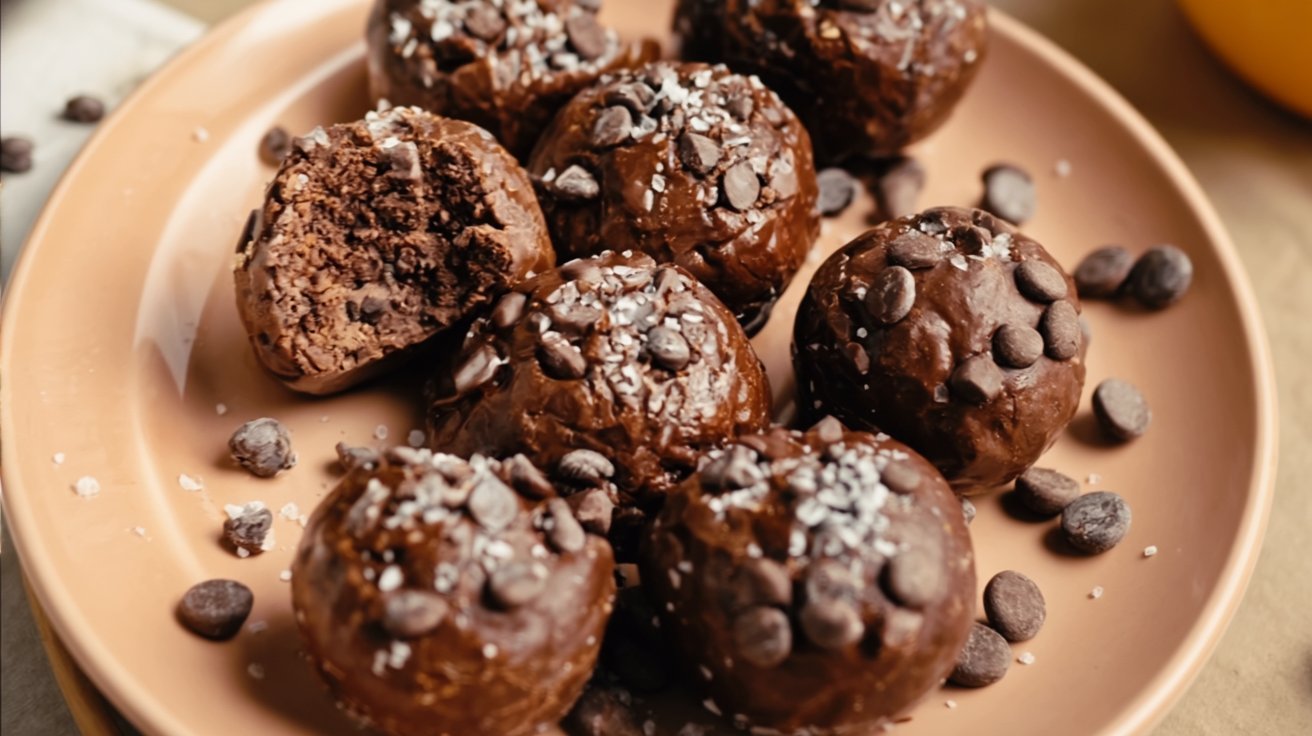
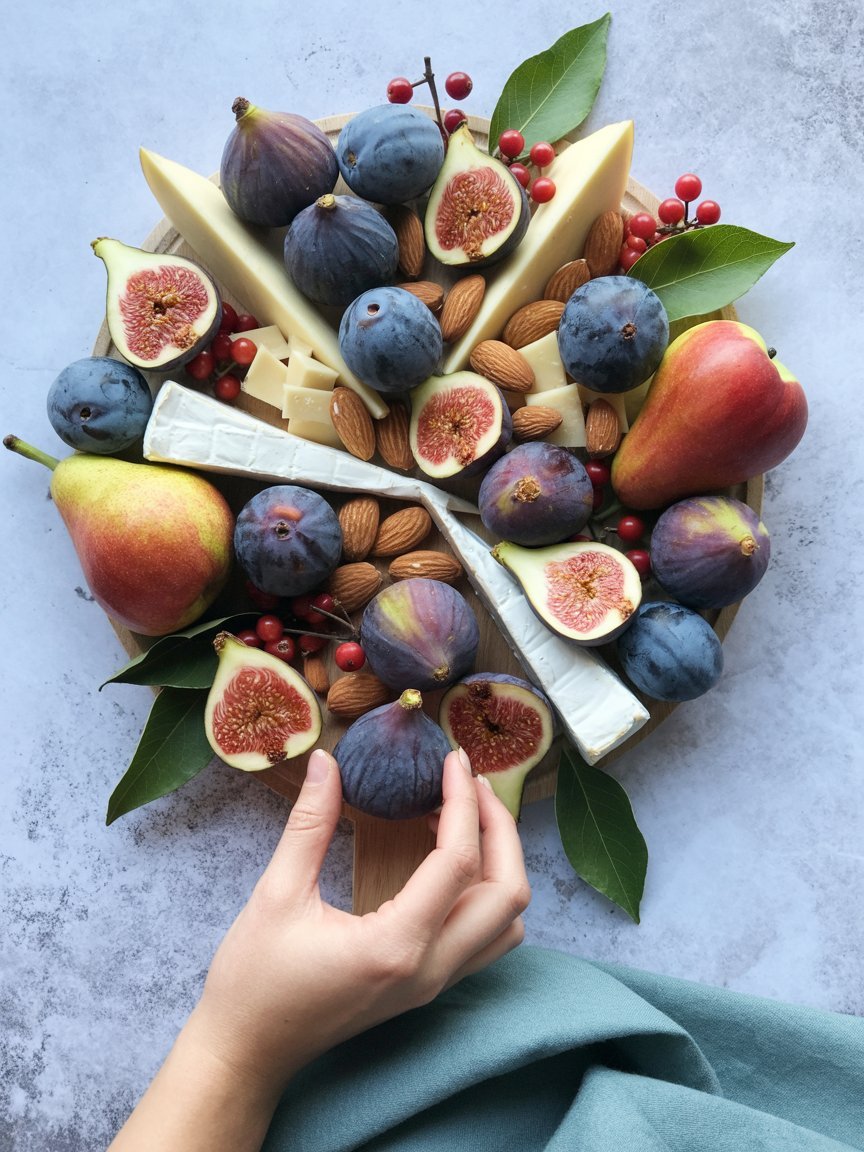
Leave a Reply